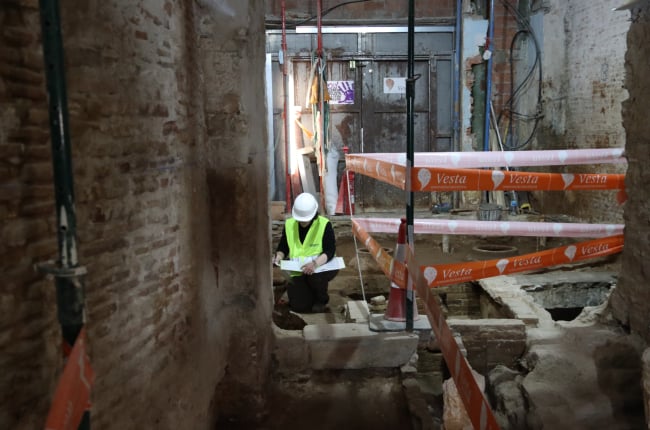Barcelona continues to surprise locals and visitors alike with its fascinating archaeological discoveries. On this occasion, renovation work on an estate in Plaza de la Llana has brought to light a hidden treasure: a 19th century chocolate factory.
This exciting discovery sheds light on a little-known aspect of the city’s past and takes us back to a time when the aroma of cocoa permeated the streets of Barcelona.
This fascinating find has generated a great deal of interest among historians and archaeology enthusiasts, offering a unique window into the city’s industrial past.
Thanks to the Almanac of the Universal Exposition of 1888, archaeologists were able to identify the chocolate factory mentioned in the document as “Guardia. Chocolates y pastillaje”, coinciding with the name found on the lead molds recovered during the excavations.
This chocolate shop, run by Clemente Guardia, was one of the most renowned in 19th century Barcelona. It also exported its chocolates to the Spanish overseas territories.
The archaeologists in charge of the excavations have recovered a series of elements that reveal the existence of this ancient chocolate factory. Among them are the lead plates used to make the labels of the chocolates, where the name of the factory can be seen: Clemente Guardia.
These findings give us a glimpse of the importance and reputation of this company, which exported its products to the Spanish overseas territories.
19th century chocolate factory discovered in BCN
Thanks to the meticulous work of the experts, various architectural elements of the factory have also been documented, as well as storage containers and tools used in the chocolate manufacturing process.
This discovery not only gives us a detailed insight into the life and work in a 19th century chocolate factory, but also gives us a better understanding of Barcelona’s industrial history.
But the discovery of the chocolate factory is not the only treasure that has come to light during the rehabilitation works. Archaeologists have also discovered the remains of a medieval house from the 14th century, as well as architectural elements that suggest the existence of a Gothic mansion owned by the Pia Almoina.
These finds transport us even further back in time, revealing additional layers of the city’s rich history.
The work of municipal archaeologists has been fundamental in documenting and preserving these valuable remains of the past. Once the excavations are completed, the artifacts will be transferred to the facilities of the Barcelona Archaeological Service for study and conservation.
However, consideration is being given to the possibility of preserving some elements in situ, allowing citizens and visitors to directly contemplate these historical vestiges.

